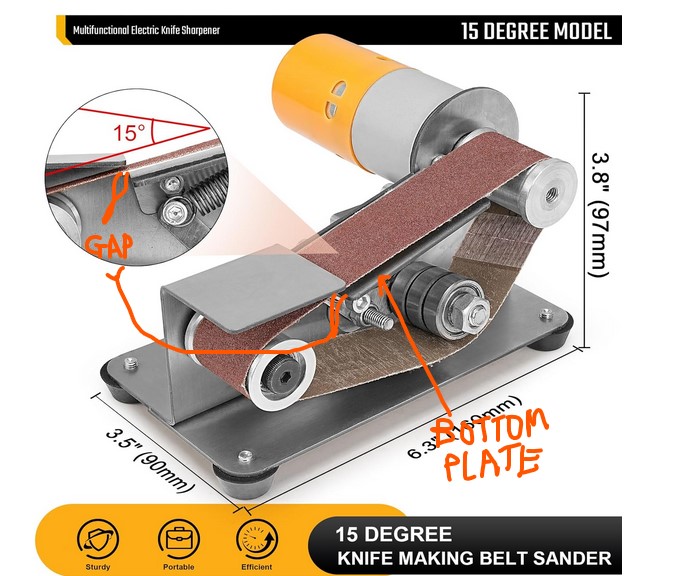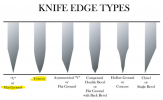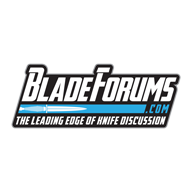I just bought my first belt sander and I don't exactly know how to use it. This is the picture.

My question is when I push the edge of the knife towards the sander belt, how hard I push?
As seen in the picture, there is a bottom plate right underneath the sander belt. There's a littl GAP between the belt and the bottom plate. Question is when I push the knife over ( horizontally ), do I barely let the edge touch the belt without pushing the belt all the way to the bottom plate? Or do I push it hard enough so the belt actually touch and glide on the bottom plate?
Thanks
Alan

My question is when I push the edge of the knife towards the sander belt, how hard I push?
As seen in the picture, there is a bottom plate right underneath the sander belt. There's a littl GAP between the belt and the bottom plate. Question is when I push the knife over ( horizontally ), do I barely let the edge touch the belt without pushing the belt all the way to the bottom plate? Or do I push it hard enough so the belt actually touch and glide on the bottom plate?
Thanks
Alan



